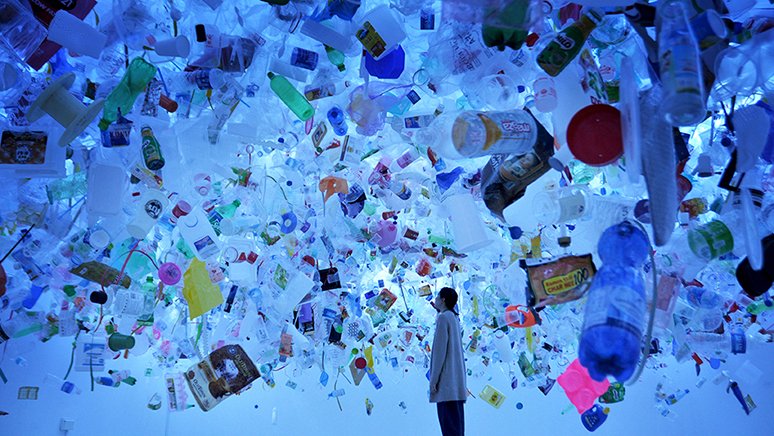When I was searching the Internet for a suitable topic for this blog, I came across this photo which fascinated me. At first glance, it looked like the picture was of a coral, but when I took a closer look at the picture and read the caption, I realized that it was of individual fishing gloves that together resemble a coral. The photo made me curious, so I wanted to learn more about the photographer and her works.
Mandy Barker is the photographer of this image she is from the UK and is known for working with marine plastic waste. The goal of Barker’s work is to engage the viewer and trigger an emotional response by combining a contradiction between the initial aesthetic appeal and the subsequent message of awareness. Further, she collaborates with scientists to raise awareness of plastic pollution in the world’s oceans and highlight the harmful effects it has on marine life and ourselves – ultimately prompting the viewer to take action.

Barker has been creating art from plastic waste for more than a decade. She was initially a graphic designer before taking up a degree in photography at De Montfort University in Leicester, UK, in 2008. During her time there, she decided to address the ever-growing problem of plastic waste, which she had noticed increasing along the English coast. “She used to collect driftwood, but over time more and more plastic waste was washing up, she wanted to do something about it and wanted to try out if photography could be a tool.”
Mandy Barker is internationally known and her work has been published in 50 countries Her work has been exhibited worldwide, including at the MoMA Museum of Modern Art, the United Nations Headquarters in New York. She is the recipient of the 2018 National Geographic Society Grant for Research and Exploration and author of her first book, Beyond Drifting: Imperfectly Known Animals, which was selected as one of the top ten photography books of 2019.
Her first series of photographs, called “Indefinite” from 2010, focuses on individual pieces of plastic, unwashed and unaltered, which Barker found on the coast and then brought to her home and photographed against a black velvet background. They resemble the appearance of various sea creatures but are man-made from plastic, the material that is deadly to the animals and organisms themselves. As they gradually decompose, they are often ingested as microplastic particles.
There are 13 other photo series on Mandy Barker’s website. One that particularly caught my eye is her “Penalty” series in which she specifically chooses the subject of soccer in relation to marine pollution. In her project, she involved citizens from all over the world, calling on them via social media to collect soccer balls they find on the coast or in the ocean and post them. In total, 992 marine debris balls were recovered from the world’s oceans in just 4 months. 769 footballs and parts of them and 223 other types of balls were found by 89 citizens from 41 different countries. The trigger for this project was the 2014 World Cup to raise awareness about the issue of polluting our oceans during an international sporting event.

All in all, Mandy Barker’s works fascinated and shocked me. Because on one hand her photos seem beautiful and aesthetic, but on closer inspection, you notice that they are not natural, but plastic which is considered the opposite of aesthetic. It makes me sad to know how many plastic pieces, as Barker depicts them in her photos, swim into the ocean and destroy our nature.


